ACR-CV-101NI-W433-D2
Wireless M-Bus to NB-IoT Battery Powered Converter Operating at 433 MHz
Quick start guide for wireless M-Bus to NB-IoT battery powered converter operating at 433 MHz ACR-CV-101NI-W433-D2.

| Ordering Code | Network | Protocol | Power Source | Max. Devices |
|---|---|---|---|---|
| ACR-CV101-NI-W433-D2 | NB-IoT | wM-Bus and proprietary protocols | D-Cell/Double D-Cell battery | 800 |
For further technical details, check the datasheet for NI-W433-D2.
Installation Process
1. Unscrew the 4 screws holding the lid, remove it and put it aside.


2. If the box comes with a battery inside, put it outside of the box and insert a SIM card.


3. Put the battery back to the box and connect the battery via JST-XH the connector. Ensure that the battery is holding firm with help of filling foam.
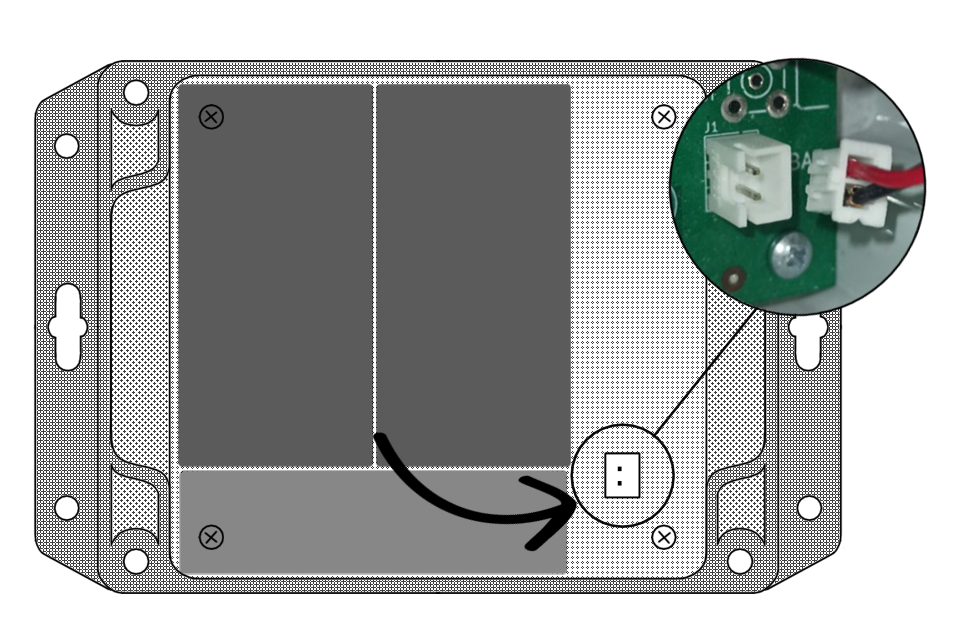
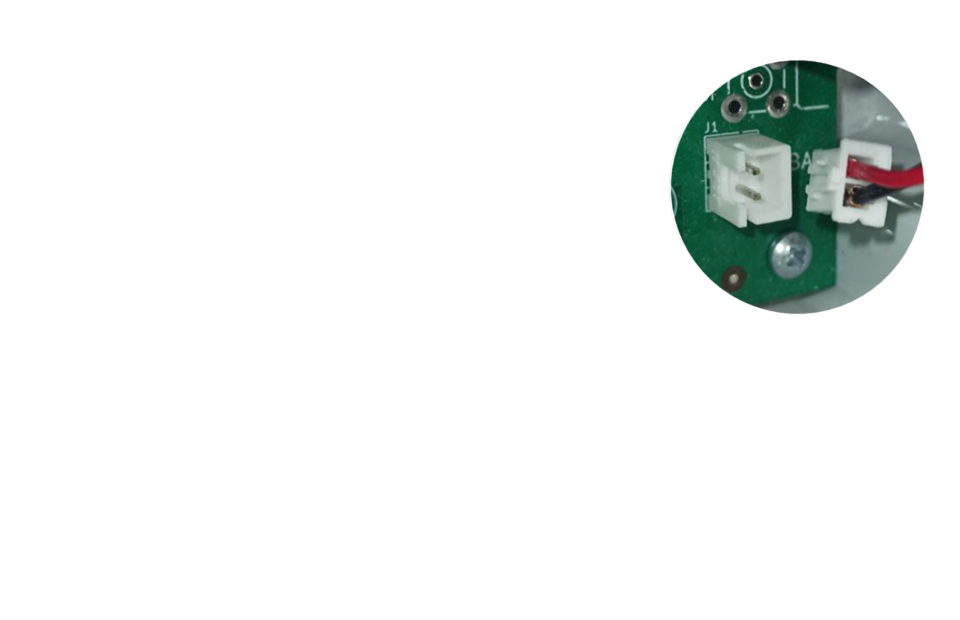
4. Place the lid back on the box, align it and tighten the screws.


5. Screw on the antenna.


6. And finally, secure the device with help of screws and Mounting holes or via other means such as cable ties.


Additional Tips for an Ideal Functionality
-
The converter is designed for both indoor and outdoor use. For an outdoor installation, place the converter with the antenna pointing down.
-
Remote configuration of the converter is possible using tools provided by ACRIOS Systems s.r.o. Check the tools section, or contact us at info@acrios.com.
-
When handling the device without the lid on, it is essential to avoid contact with liquids. Never place the device on conductive pads, and do not touch the components on the device unnecessarily.
-
For the correct functioning of the device, it is necessary to have sufficient coverage of the NB-IoT network at the installation site. We provide tools for NB-IoT signal testing as well.
-
To unplug the battery without much effort, use small pliers.
Device Configuration
There are two ways to configure the device:
- Local configuration via configuration cable - requires:
- 3.5mm jack to USB adapter (see here)
- Local GUI (download here)
GUI Download Explanation
- Open GUI at gui.acrios.com.
❗Note, that our GUI is compatible with Chromium based browsers only (we recommend Google Chrome).
- Click at an icon in the upper left corner and click on "install".
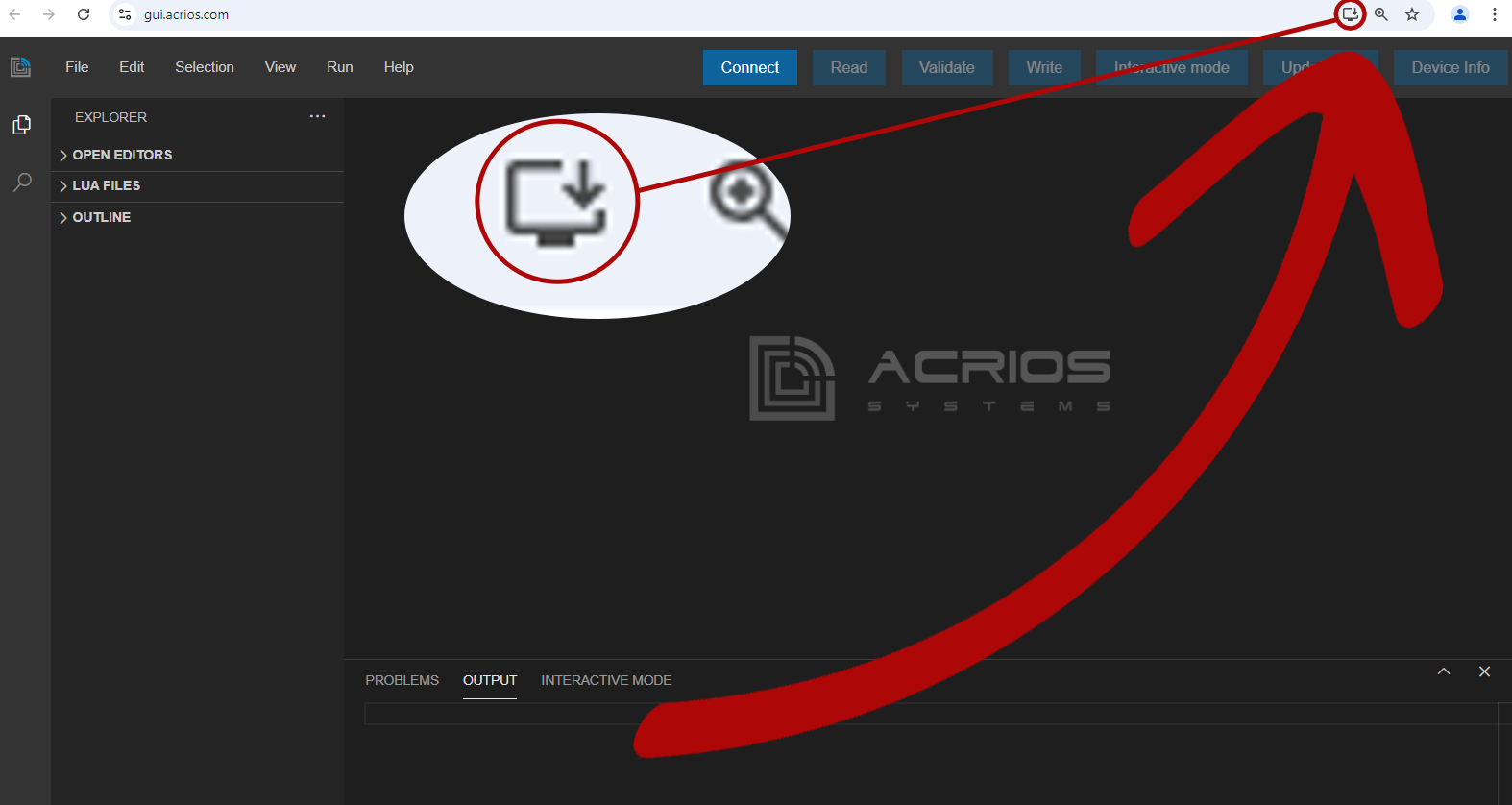

- The local UI should now install and open, but you can close it and open it with the help of an icon that should be on your desktop.
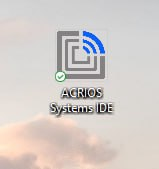
- The GUI also prompts you to pin it on the task bar, if you wish to do so.
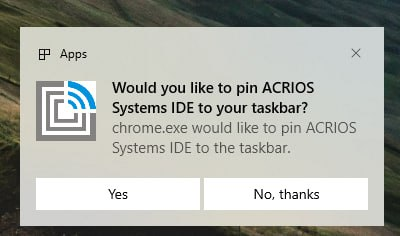
- Remote configuration via online ACRIOS GUI interface at gui.acrios.com
❗Note, that this may require modified Lua script. Contact us at support@acrios.com for further details.
Local Configuration
Universal Video-Guide
1. Insert the 3.5mm jack of the ACR-CONFIG cable into the 3.5mm jack connector on the board and connect it to a computer.
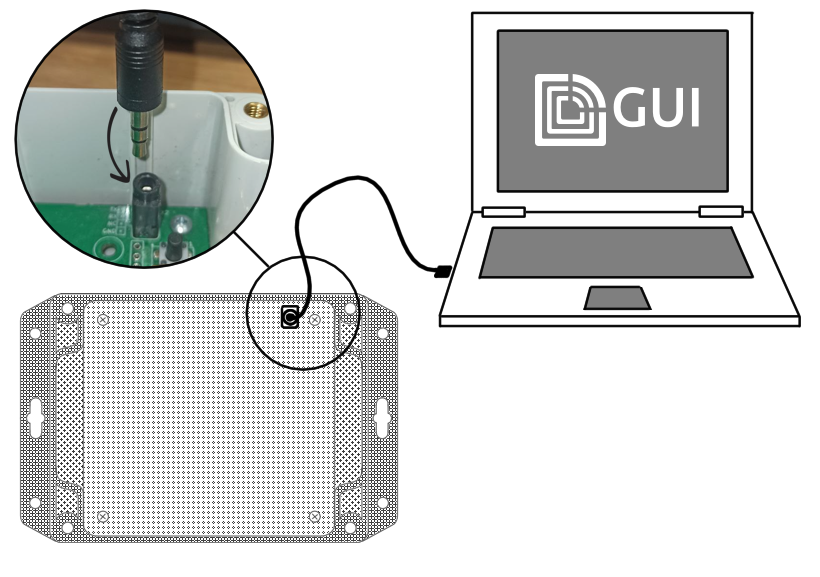
2. Launch the GUI, select a serial port, "Connect" to it and click on the "Connect" button in the ACRIOS GUI.
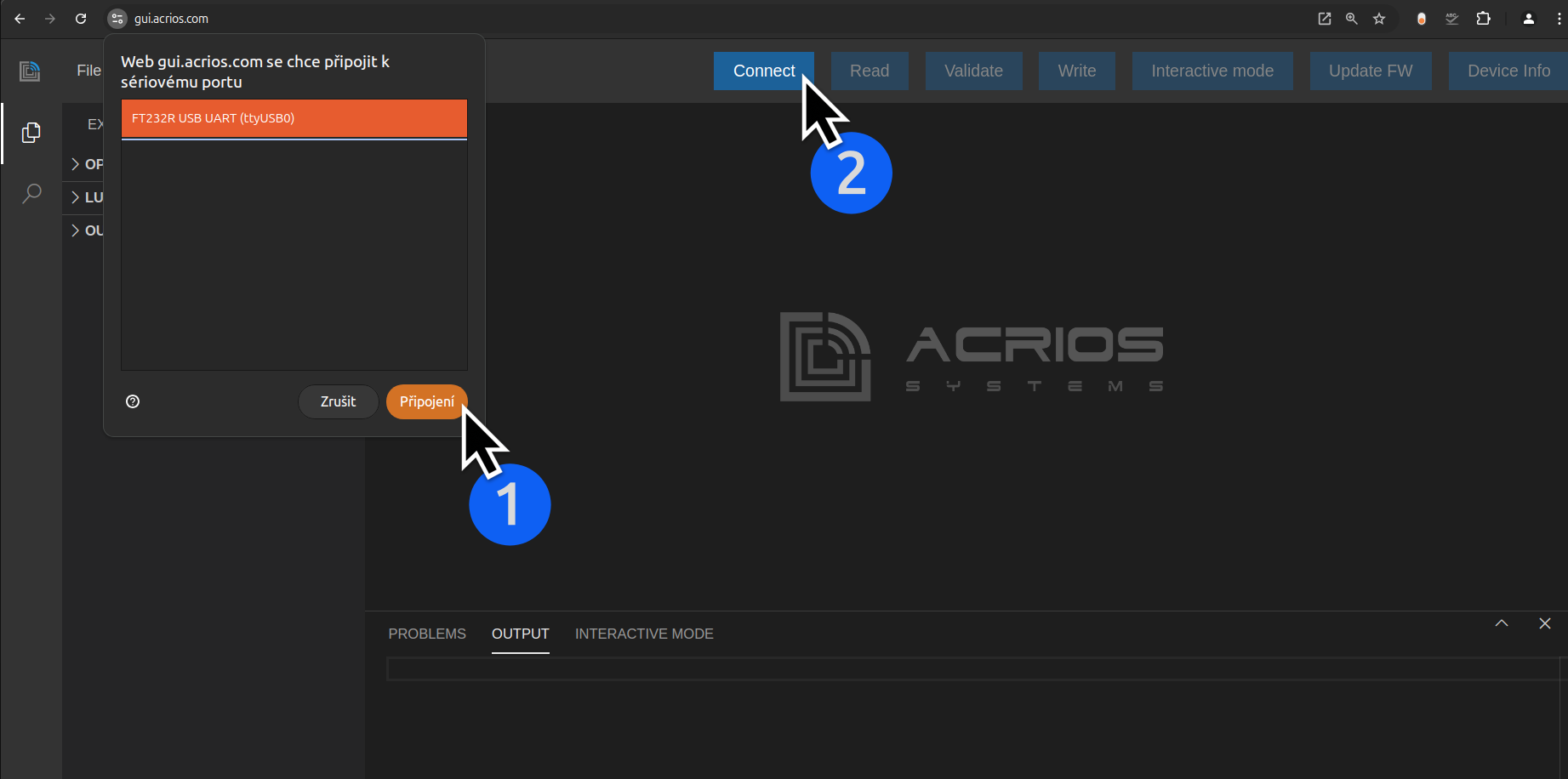
3. Now press the "Config" button.
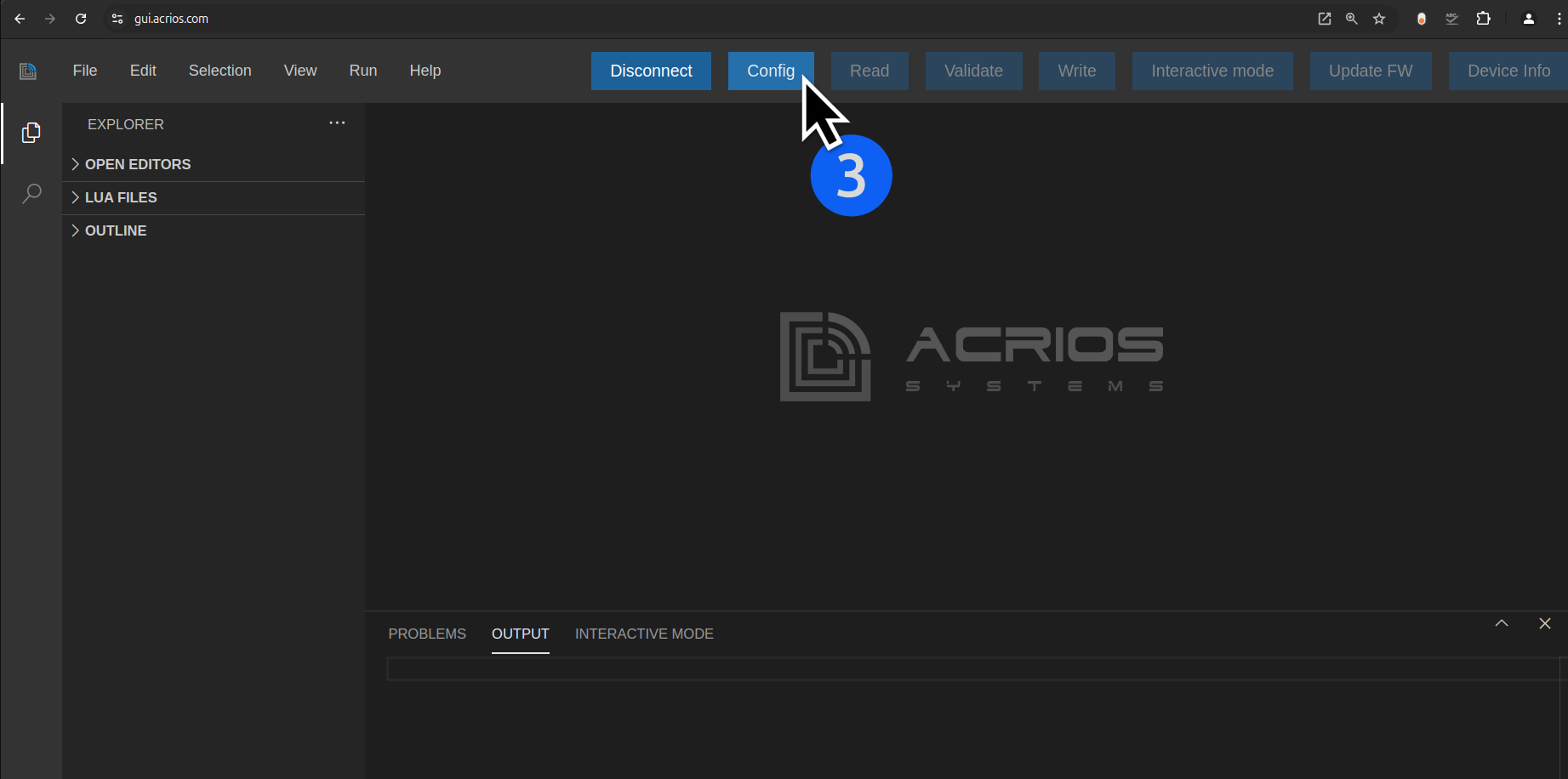
4. Power the device ON by connecting the power source or RESET it by repeatedly pressing the button in quick succession IN CASE it is ON already.
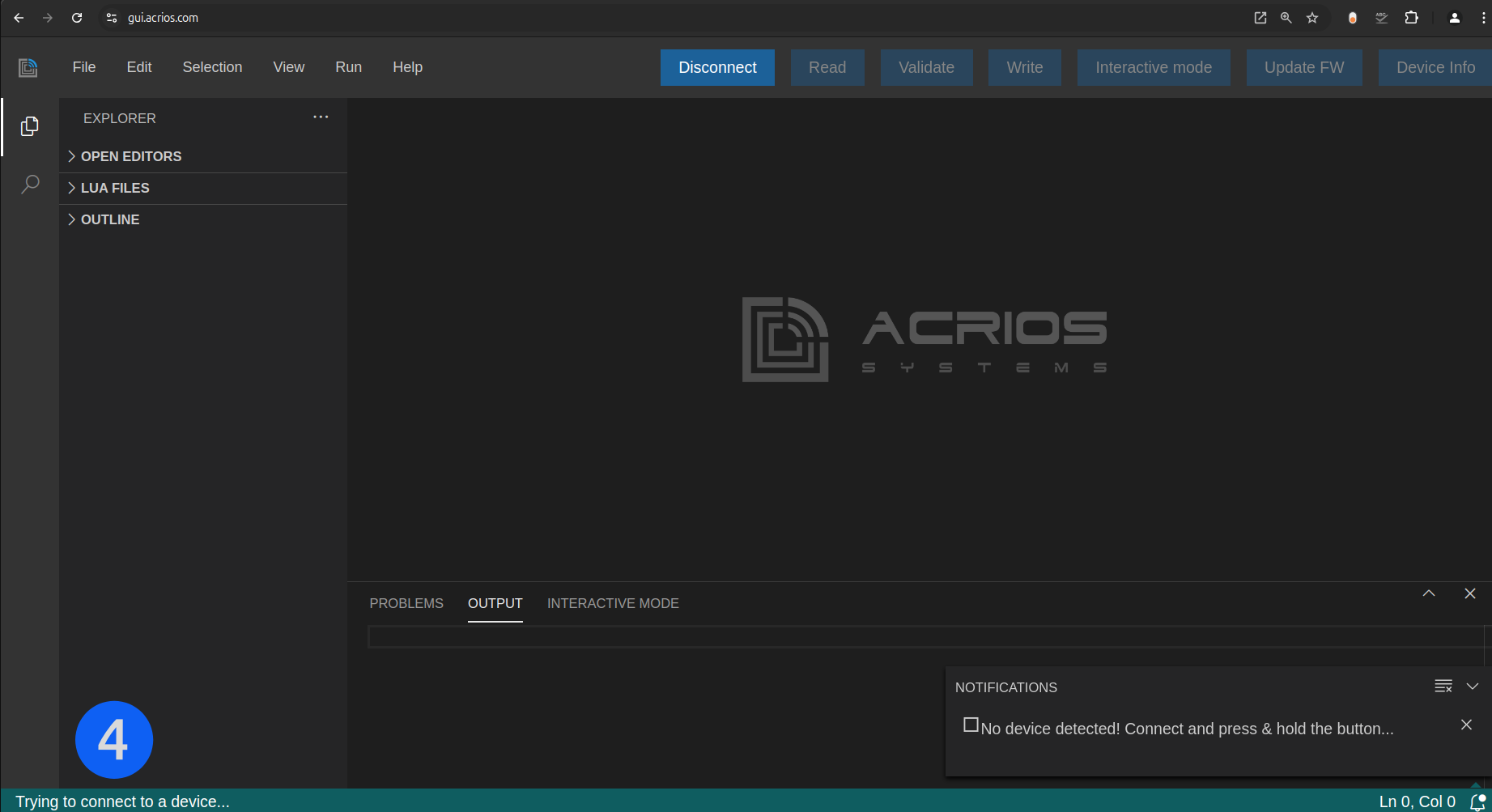
Powering ON the Device


RESTARTING the Device


5. Bootloader will initiate (a blue LED will turn on), skip it by holding the button. It should blink couple times and turn off - bootloader has been skipped.

6. Once the bootloader is skipped, the device should be connected. Configure it according to your needs. You can find more here.
7. Press "Disconnect", disconnect the power source and connect it again.
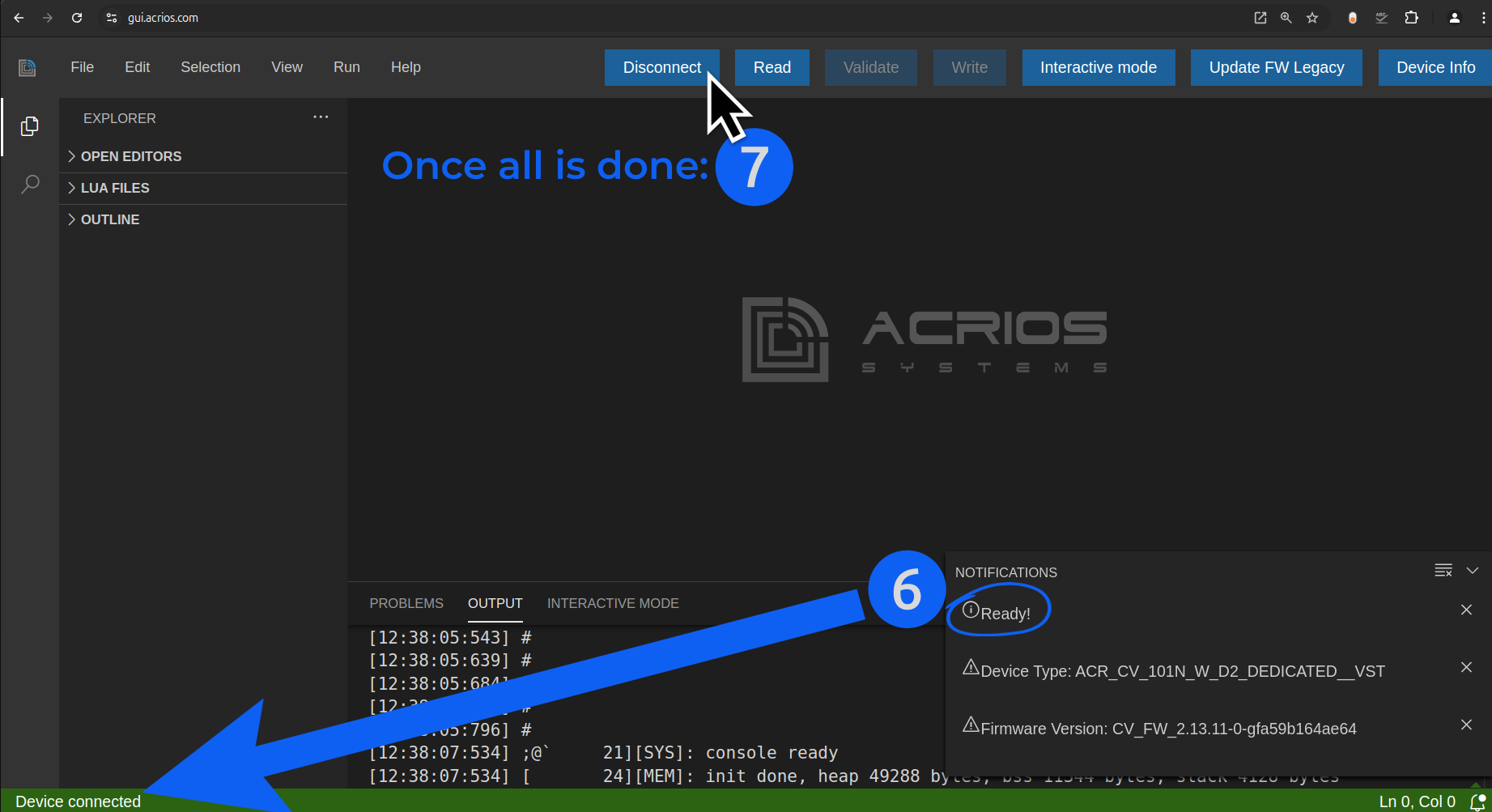

Remote Configuration
Refer to the other sections such as Manuals, Tools or Configuration API for further details on remote configuration.